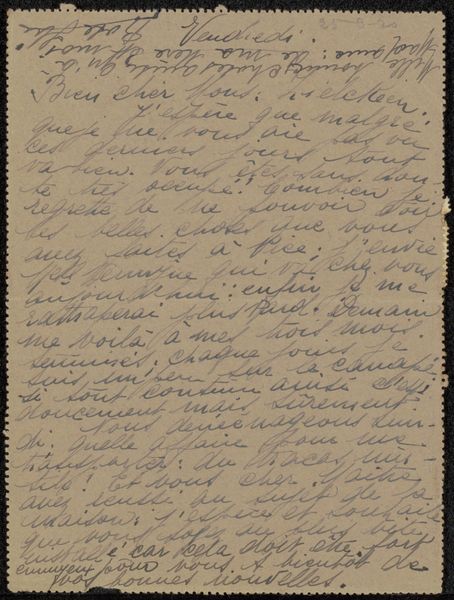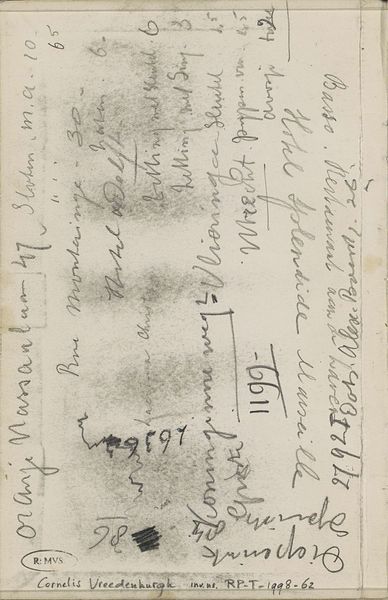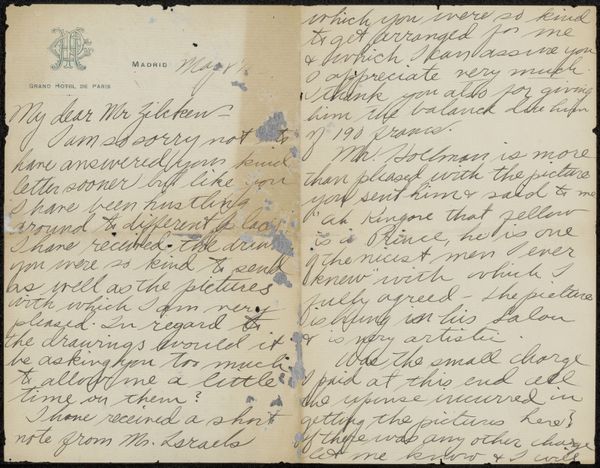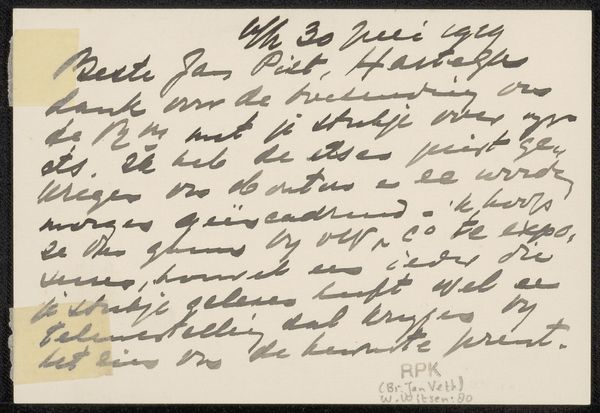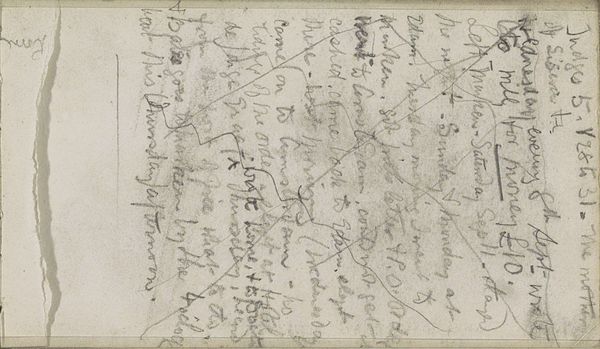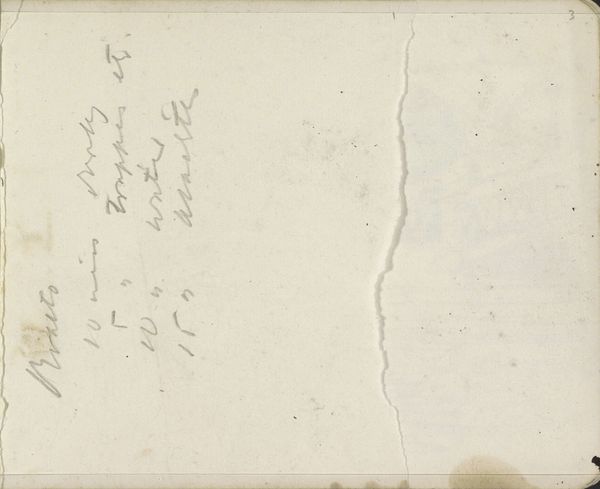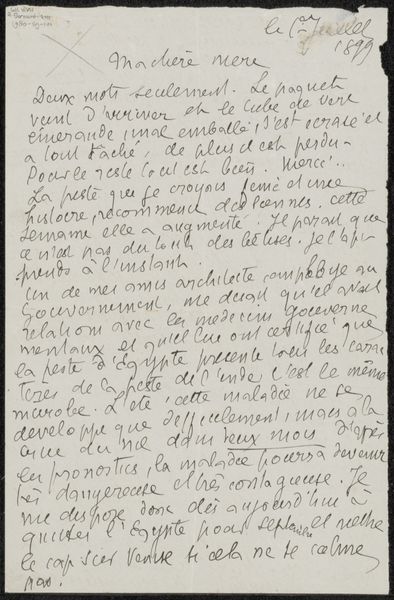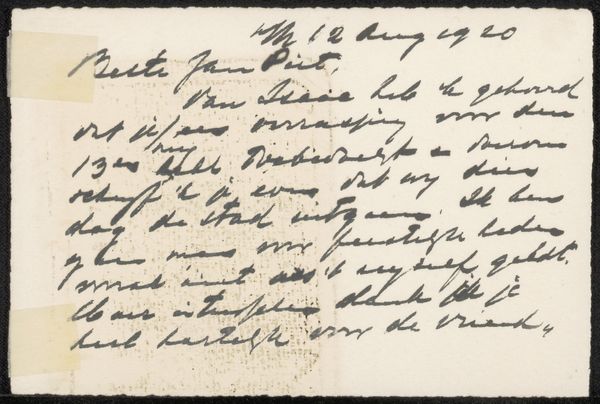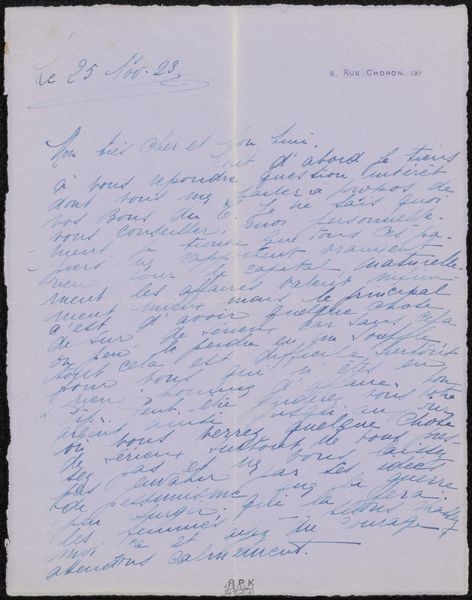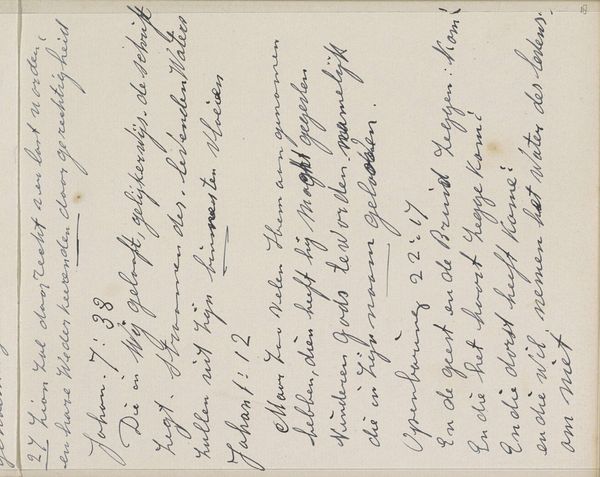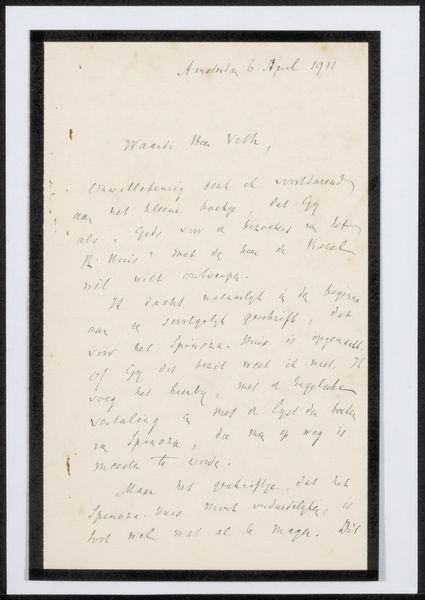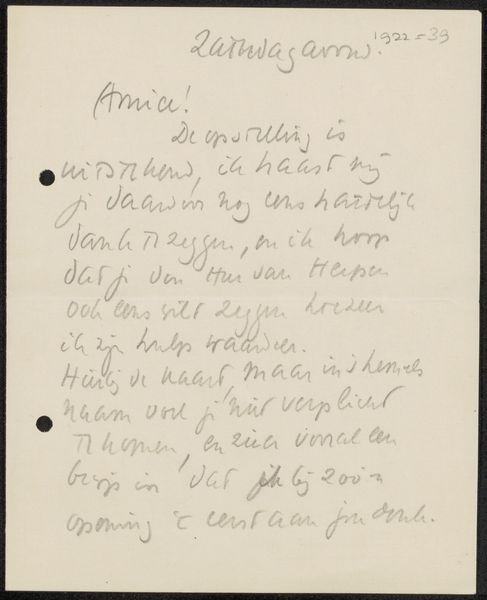
drawing, textile, paper, ink
#
drawing
#
textile
#
paper
#
ink
#
romanticism
#
calligraphy
Dimensions: height 9.2 cm, width 13 cm
Copyright: Rijks Museum: Open Domain
These two dried twigs from Goethe's garden were preserved on paper in 1833 by an anonymous hand. The inscription speaks of moss and ivy planted in Goethe's youth, elements that carry rich symbolism. Consider the ivy, a motif echoing through art history, seen clinging to ruins in Romantic paintings, signifying enduring memory and melancholic reflection. In ancient Greece and Rome, ivy was associated with Dionysus or Bacchus, representing intoxication and ecstatic frenzy, but also rebirth and immortality. The presence of ivy here reflects a longing for a connection to the past, hinting at the transience of life, a poignant meditation. The act of preserving these withered remnants taps into our collective subconscious, a shared human desire to hold onto time. What psychological force drove someone to safeguard these relics? The emotion is palpable, a bridge across time that speaks to us even now. We are reminded of the cyclical progression, of life and death, decay and renewal.
Comments
No comments
Be the first to comment and join the conversation on the ultimate creative platform.
